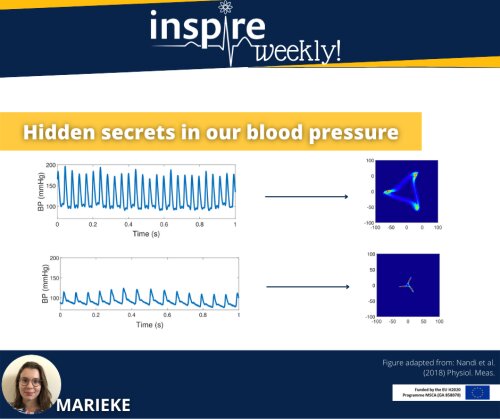17/02/2021 - Marieke (ESR #11)

The measurement of blood pressure gives us valuable information on the health of a patient’s heart and blood vessels. The blood pressure is recorded as a waveform, a regularly repeating signal over time. Typically, the maximum and minimum value of the waveform are evaluated. In a healthy individual, these values are approximately 120/80 mmHg. In many diseases, the blood pressure is raised.
However, besides this maximum and minimum value, there is considerably more information captured in the recording of a blood pressure, that is often not taken into account. Analysis of the shape of the waveform and variability of this signal may give us additional information on how the heart and blood vessels are affected, particularly after drug treatment. In order to look at subtle changes in these waveform features, a new model was developed, called the attractor reconstruction. This mathematical model converts the blood pressure waveform (on the left-hand side of the flyer) into a 2D image (as shown on the right-hand side). By analysing different features of this 2D image, such as colour or length of the loops, we can extract detailed information on the effects of drugs on the heart and blood vessels. During my project, I will apply this attractor reconstruction on blood pressure waveforms and blood flow waveforms, to see how a number of anticancer drugs affect the cardiovascular system. In this way, I will explore the mechanism and safety of these medicines.
References:
- Nandi, M., & Aston, P. J. (2020). Extracting new information from old waveforms: Symmetric projection attractor reconstruction: Where maths meets medicine. Experimental Physiology, 105(9), 1444–1451. https://doi.org/10.1113/EP087873
- Nandi, M., Venton, J., & Aston, P. J. (2018). A novel method to quantify arterial pulse waveform morphology: Attractor reconstruction for physiologists and clinicians. Physiological Measurement, 39(10). https://doi.org/10.1088/1361-6579/aae46a